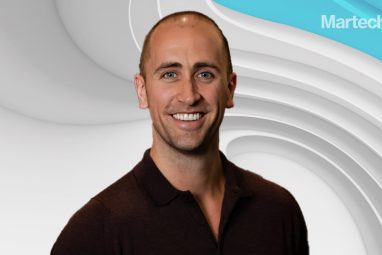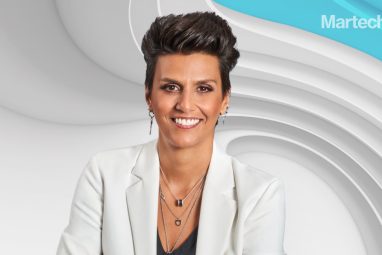Understand Customers On A Subconscious Level
Colin Shaw is recognised as one of the World’s Top 150 Business Influencers. As the Founder and CEO of Beyond Philosophy, he helps organisations improve their Customer Experience (CX) by identifying the hidden, unmet needs of customers. Colin has written seven bestsellers on customer-driven strategies, including Unlocking the Hidden Customer Experience: Short Stories of Remarkable […]
Topics

Colin Shaw is recognised as one of the World’s Top 150 Business Influencers. As the Founder and CEO of Beyond Philosophy, he helps organisations improve their Customer Experience (CX) by identifying the hidden, unmet needs of customers. Colin has written seven bestsellers on customer-driven strategies, including Unlocking the Hidden Customer Experience: Short Stories of Remarkable Practices That Ensure Success published in 2015.
Excerpts of his conversation with Ravi Raman, Publisher of Martechvibe
How has CX evolved in the last few years?
CX has changed, it’s become far more critical since the time I started my work in 2002. Organisations now recognise the importance of CX. But the challenge is that some people are just jumping on the bandwagon and doing it because everyone else is.
There is a growing understanding that CX isn’t just about rational things but also about how the customer feels. So, organisations are thinking about customer emotions in much more detail. One of the big things that has changed, the pandemic has only accelerated this is — the digital experience. So, this hybrid approach is a massive change that is going to stay.
We need to wait and see how this digital experience coupled with how people move ahead from the pandemic will affect behaviour, especially buying behaviour. That’s going to be a massive change as well.
Who really owns the CX in an organisation?
I’m biased but building the customer’s experience is the most important thing a company does. So, undoubtedly it is owned by the CEO. How organisations implement, it may differ. A Chief Customer Officer could be someone in the marketing or customer service team, for example.
I would like to see someone in the c-suite who is dedicated to this role, who owns it. The role looks across different lines, multiple departments. If it’s a person placed in one team, then from a political standpoint, it may seem like something that the team needs to take care of. But that’s not true. Ideally, the Chief Customer Officer should be someone with responsibility and authority, so it needs to be someone on the top.
When we talk about the brand, it’s bigger. The brand makes a promise in the market. The brand is above the CX. CX delivers against that brand.
In many organisations, the brand is separate from what they are trying to deliver in products and services. There is one team that works on the overall brand approach and another which works on product offerings. Here, there is a chance that the customer thinks, well, that’s nothing like I thought it was going to be. This is a different but big problem in itself — the discrepancy between brand promise and delivery.
Tell us about customer science. Why should brands care about this?
When we look at CX, we look at four aspects; the rational, which literally looks at what customers are doing, the emotional, which asks what they are feeling, the subconscious, which could be messages that brands deliver without explicitly saying it (like when banks have pens on chains, they subconsciously tell customers that they don’t trust them). And lastly, psychology which asks why people do what they do.
Customers are illogical. Despite human beings’ desire to think they are rational beings, they are not. There is a good book by Daniel Kahneman, PhD, who was awarded the Nobel Memorial Prize in Economic Sciences for his groundbreaking work in applying psychological insights to economic theory. He talks about how people don’t choose between experiences but choose between the memories of that experience.
So, when you think about it, customer loyalty is a function of memory. If you go back to a hotel, it’s the memory of that experience that made you believe it was a good one.
Imagine you have a fishing net underwater. You pick it up and look at one of the knots on the net. That is a memory. Remembering your hotel experience is one knot, but it’s attached to other knots. Like other experiences of going to other hotels, booking the suite, paying for it online, talking to the concierge. When you take it out of the water, you are consciously observing it. Then you let it go back into the water. But the memory is still there subconsciously.
What we have to do is design a memory, and then the memory creates the expectation. When you understand how to do that, you’ve got it!
It’s 2021, and I’m starting to see the convergence of 3 things;
- AI which can gather all of the information, the memories in the fishing net, and analyse it
- Data pulled from different sources
- Behavioural science or understanding heuristics which is a rule of thumb that all human beings use to make decisions
Together, you have a powerful tool. That is customer science. It is a combination of understanding human behaviour and the ability to look at all the data using AI.
Recently, during a podcast I run called the Intuitive Customer, I was speaking with two behavioural scientists, one from Instagram and the other from a Fintech company. I asked — how many Fintech companies actually have behavioural scientists on their teams. And she said, well, all of them do. This surprised me, but maybe it shouldn’t have.
We’ve been able to seal all this data, and AI can analyse it. The key is being able to predict or provide the customer with a proactive experience. The word proactive is going to be very big in the next few years.
We live in a reactive world. I may want to track my product, for which I have to pick up my phone and see where it is. I would rather that the system knew that I’m the kind of person who wonders about where his product is. The system would have learned that from my past behaviour of tracking past products.
Also Read: The Importance of Customer Experience In 2021
What is the next step that organisations can take to put customer science into strategy?
It’s all about the mindset. Are you looking at the world through a customer lens or not? I’m not advocating giving the customer everything they want — that is not profitable.
If we look at Amazon, Jeff Bezos has a mindset that wants Amazon to be the most customer-obsessed company in the world. On the other end, we have cable companies that don’t have that mindset because they are inwardly focused. So here, what happens is you get new startups that recognise that this is an opportunity and start to make the right investments.
In most cases, people will start to use AI not to improve the CX but to save costs. But there will be some outliers in about 10 per cent of the case. These are the organisations to keep an eye on.
Tell us about one company that has cracked the customer science model and are seeing results.
Airbnb, Uber are all good examples. Amazon is definitely doing a good job. I’ve only ever spoken to one person at Amazon. Yet, digitally they know me and understand me. I feel confident in buying from them. They know when I wake up and go to bed because I use Alexa. They know how many people are at my front door because we have cameras at the gate. They have behavioural data, which is a rich source when combined with the actions of the customer. You have to combine what the person is doing with the type of person that they are to get a detailed segmentation.
What people tell you they want and what they actually want can be two different things. Recently, we did some research with a hospital. Patients were saying that they wanted to spend more time with their doctor. They didn’t.
Instead, they wanted to feel like the doctor was listening to them. The irony is that the natural move would be to increase appointments or appointment time. But this would cost more money without helping with patient scores. In fact, what they needed to do is restrict doctors from using the computer during consultations, increase eye contact when dealing with patients. Sometimes, you have to ignore what customers say and look at what they do.
Today, organisations have a rich data set of what customers do but what matters is what you do with that information.
Also Read: Is Single Customer View the Future of CX?
Is shaping customer perceptions a big part of CX?
Where do your perceptions come from? Again, understanding how memories are formed is key.
What happens internally is that a person thinks back to a memory and matches that impression to some form of a standard that they have created that they believe is right. What we know is this — 9/10th of reality is perception. Therefore, you have to understand customers at a deeper level. It’s not just what they tell you their perception is. You have to understand how they tick.
In the case of Cambridge Analytica, Trump’s election is a classic example. So many people said I wouldn’t vote for him, and then he won. This proves that there is a gap.
What advice would you give a legacy company?
There are two things. The big problem with legacy companies is — mindset. Address it, change the way people think about customers and look at customers.
The other thing that’s key is understanding what customers really want.
Disney asked people what they would like to see on the menu of their eateries inside the theme park. People said they wanted salads. But Disney also knows that when people go to theme parks, they don’t feel like eating a salad. They want hotdogs and burgers.
In this thrust to implement AI, you are going to throw the baby away with the bathwater. This is the danger.
I’ve lived half of my life in England where we used to get milk delivered. This was about 15 years ago. One day, I said to my wife, maybe we should go to the grocery store and get milk as everyone does nowadays. She said no. According to her, our milkman Kevin came around every Friday to collect the bill. She would pay him, and they would have a little chat and a laugh. That was the highlight of this transaction that she didn’t want to let go of.
Later, milk sales declined, Kevin left, and the new milkman tried to streamline the process. So, instead of knocking on the door, he would leave a receipt under the milk bottle so we could leave a cheque somewhere safe. The problem was that he reimagined the key action that was bringing the customer delight.
You really have to ask yourself — what brings value. If you don’t understand that, you could end up automating the key interactions that drive value and ultimately lose business.
Let’s really understand our customers and how they are making decisions at a subconscious level.
Give us one book recommendation.
Alchemy: The Surprising Power of Ideas That Don’t Make Sense by Rory Sutherland.








































































































